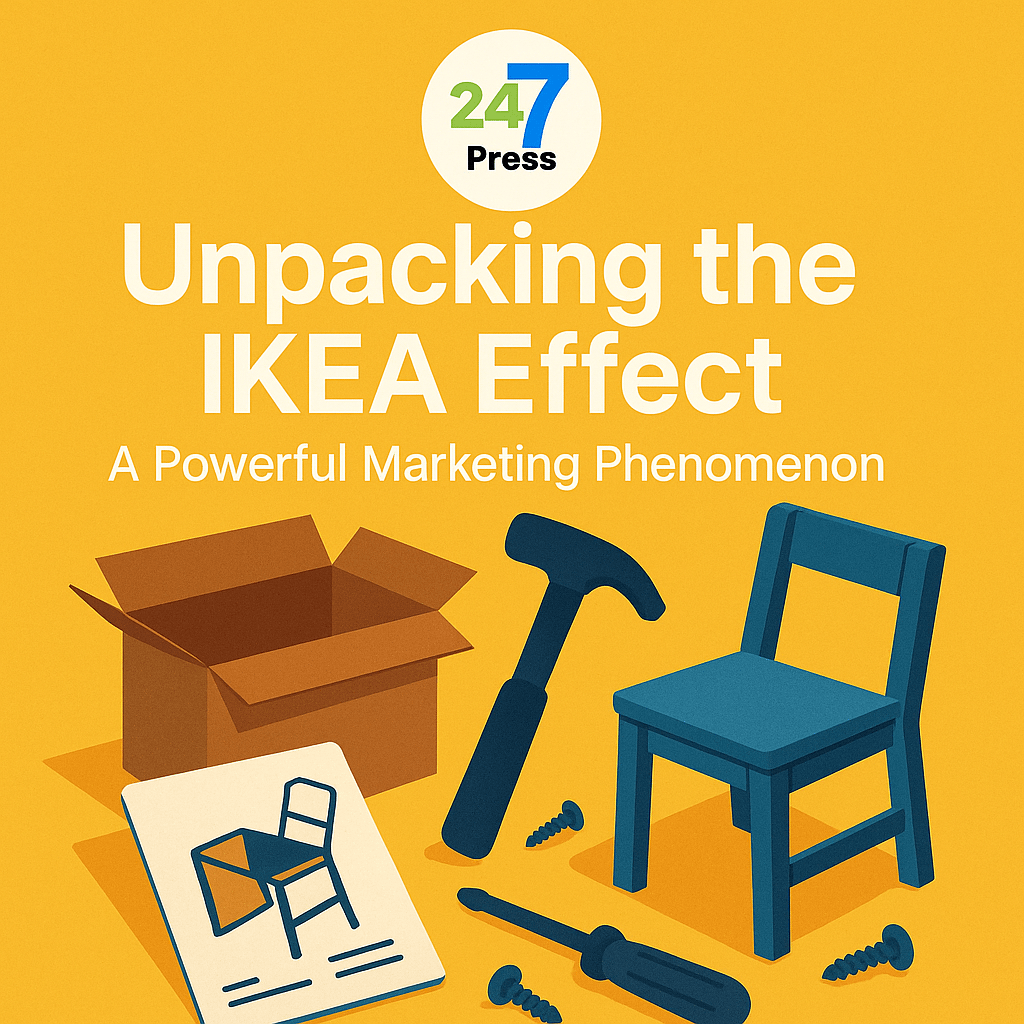
Welcome to our deep dive into the “IKEA Effect.” This intriguing concept, recognized across marketing circles, has powerful implications for both brands and consumers alike. Understanding the IKEA effect can unlock new ways to engage your audience, build brand loyalty, and drive sales growth.
What is the IKEA Effect?
The ‘IKEA Effect’ refers to the increased value people place on products they have part-in assembling, similar to how IKEA customers build their purchased furniture. This psychological phenomenon suggests that the effort and time invested in creating something significantly boost its perceived value. The term was first coined by researchers Michael I. Norton, Daniel Mochon, and Dan Ariely in a 2011 study published in the Journal of Consumer Psychology. Their research demonstrated that people are willing to pay more for products they helped assemble, compared to identical pre-assembled items.
Diving into the IKEA Effect in Marketing
Understanding the Importance
In marketing, this effect is more than just a fun fact. It’s a tool that can leverage consumer psychology to drive engagement, product value perception, and ultimately, sales growth. When customers are involved in the creation or customization of a product, they develop a sense of ownership and pride. This emotional investment translates into a stronger connection with the brand and a higher likelihood of repeat purchases.
Harnessing the IKEA Effect
So, how can this effect be harnessed in a marketing context? It’s all about offering personalized experiences, item customization, or even opportunities for consumers to feel like they’re part of the product creation process. Here are a few ways brands are leveraging the IKEA effect:
- Product Customization: Companies like Nike allow customers to design their own sneakers, choosing colors, materials, and even adding personalized text. This not only increases perceived value but also creates a unique product tailored to the customer’s preferences.
- DIY Kits: Food brands like Blue Apron and HelloFresh provide meal kits with pre-measured ingredients and recipes, enabling customers to cook restaurant-quality meals at home. The act of preparing the meal enhances satisfaction and appreciation.
- Co-Creation Campaigns: LEGO Ideas invites fans to submit their own designs for new LEGO sets. Winning designs are produced and sold, giving customers a direct role in product development.
The Potential Impact of the IKEA Effect
When a customer builds or customizes a product, their emotional attachment to the product increases, often leading to an improved overall experience and increased customer loyalty. This effect can also foster a sense of accomplishment and pride, which customers may share with friends and family—creating organic word-of-mouth marketing.
Real-World Examples:
- IKEA’s Flat-Pack Furniture: The classic example, where customers assemble their own furniture, leading to a greater sense of ownership and satisfaction.
- Build-A-Bear Workshop: Children (and adults!) design and stuff their own plush toys, choosing accessories and even recording personalized messages.
- Online Design Tools: Print-on-demand services like Zazzle or Canva let users create custom t-shirts, mugs, and stationery, making the end product feel more special.
- AI Book Writing Tools: AI book writing tools allow one to write a book with AI leveraging the IKEA Effect by allowing authors to co-create their manuscripts—so the final book feels more meaningful and valuable because they helped build it.
Identifying Risks Involving the IKEA Effect
Like all marketing tools, it’s essential to use the IKEA effect wisely. Overcomplication of the assembly or customization processes might lead to frustration, driving customers away. If the process is too time-consuming, confusing, or requires specialized skills, customers may abandon the product or leave negative reviews.
Tips to Avoid Pitfalls:
- Keep It Simple: Ensure that assembly or customization steps are straightforward and well-explained.
- Provide Support: Offer clear instructions, video tutorials, or customer service support to help users if they get stuck.
- Test the Experience: Gather feedback from real users to identify pain points and refine the process.
Broader Applications of This Effect
While the IKEA effect is most visible in physical products, it also applies to digital experiences and services:
- Gamification: Apps that let users build avatars, customize dashboards, or unlock achievements tap into the same sense of ownership.
- Learning Platforms: Interactive courses that encourage students to create projects or portfolios foster deeper engagement and satisfaction.
- Crowdsourcing: Platforms like Kickstarter or Indiegogo allow backers to contribute ideas and feedback, making them feel invested in the final product.
FAQs:
Q1: Can the IKEA effect backfire?
Yes, overly complicated assembly processes can result in negative customer experiences. If customers feel overwhelmed or unsuccessful, their frustration can outweigh any sense of accomplishment.
Q2: Is the IKEA effect applicable outside of furniture sales?
Definitely! The IKEA effect can apply to any situation where customers participate in creation or modification of a product or service. This includes everything from meal kits and craft projects to software customization and online learning.
Q3: How can I effectively use the IKEA effect in marketing?
The key is to make it a fun, rewarding experience for the consumer without making it overwhelmingly complicated or time-consuming. Focus on intuitive design, clear instructions, and opportunities for personalization.
Wrapping Up: IKEA Effect as a Marketing Tool
In conclusion, the IKEA effect is a marketing strategy worth exploring for brands seeking to boost customer engagement and perceived value. By stimulating a sense of achievement in customers, brands can improve customer experience, loyalty, and potentially, sales. However, it’s crucial to strike the right balance between involvement and simplicity to ensure a positive experience.
Key Takeaways:
- The IKEA effect is a significant psychological phenomenon with extensive marketing implications.
- Implementing the IKEA effect can enhance customer satisfaction and brand loyalty.
- Use the IKEA effect wisely to prevent customer frustration.
- The effect applies to both physical and digital products, offering versatile opportunities for brands.
Let’s discuss: Have you experienced the IKEA effect? Can you think of strategies to maximize its effect on your marketing efforts? Leave your thoughts in the comments below!





